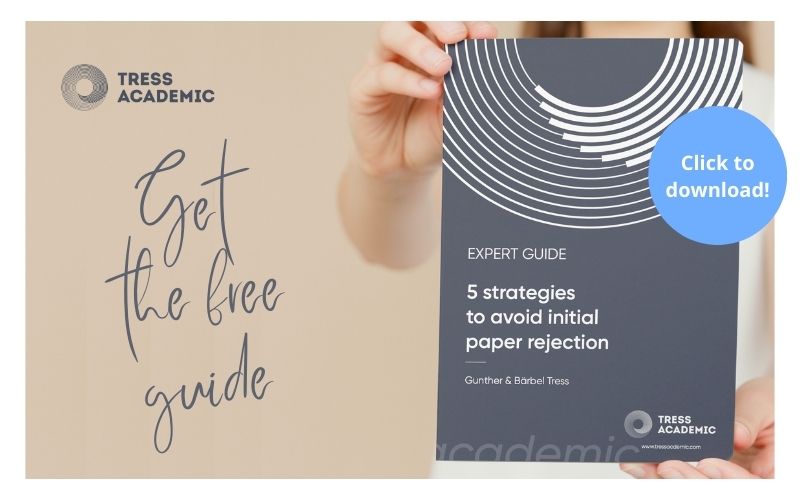Do you know the journal you want to submit your next paper to? Or are you struggling to find the right journal? Is it hard to decide which option to choose? Or do you wonder whether there is an appropriate journal for your paper at all? Let us help you with our 8-step guide to find journals where you could submit your paper.
Writing and publishing papers is a key requirement for researchers—experienced and less-experienced ones alike. It is not only important that you publish regularly, but also in WHICH journals you are being published. In paper-writing, the focus is often on getting the text and figures right, making sure that the paper is convincing, that results are understandable, the methods plausible, and so on. But how much do you focus on the question of how to find the appropriate journal?
If you’re planning to write a paper, we recommend thinking immediately about a potential journal to submit to. It can easily feel like an overwhelming task, especially when you work in a field where there are hundreds of journals available, or in a field with very few journals.
Selecting the right journal is an important aspect of securing publishing success. Many papers are submitted to journals where they don’t belong because they don’t fit the journal’s audience and interest. These rejections—called “Out-of-scope”-rejections—are sent very quickly, but are frustrating to get as well. To increase your chance of getting published, spend time and effort selecting the right journal for your specific paper.
To help you on this task, we present here 8 steps that you can follow to find journals you can consider submitting your paper to. In our free worksheet Find a journal for your paper, you get a quick overview of the steps, and can apply them directly to your next paper.

Step 1: Define the paper topic
The first thing to do is get a clear idea of what your paper will be about. What is the question that your paper is addressing? What is the specific topic that your paper looks at? What will make your paper unique and relevant to your readers?
Define the paper topic, and then think about which keywords could be used to describe the paper. Make a list of these keywords.
Step 2: Define the audience
You want your paper to be published in a journal, but who are the specific people that are interested in your paper? Try to get an idea of what your audience looks like. Which disciplines and subjects will they be from? Are there any subgroups that your paper might be specifically relevant for? Write them down.

Step 3: Identify potential journals using keywords and databases
Now it’s about identifying potential journals that might be interested in your paper. Use the keywords from step one above, go to databases, and type them in to see which journals come up. The first place to go is Google Scholar, but it might be useful to also look at specific journal databases like Scopus, Web of Science, the Directory of Open Access Journals, and many others, or use publisher specific journal databases (such as Wiley, Sage, Springer, Elsevier, Taylor & Francis, and others).
In this step, you will get many journal names that you can list as potential journals for your paper.
Step 4: Use journal finder tools
Another possibility to identify possible journals for your paper is to use the journal finder tools of journal publishers. They work by comparing semantic elements from the information that you put into the tool and look for the best fit of these expressions inside the publisher’s journal portfolio. The tool then suggests potential journals.
Typically, you can copy your abstract, title, or keywords—or even the entire paper—into the tool. The results are suggestions from the same publisher’s journal portfolio. Common tools are:
Springer Nature’s Journal Suggester,
IEEE’s Publication Recommender,
Taylor & Francis’ Journal Suggester,
and many other publisher-related or independent search tools. They will all help you find new journals to include on your list.

Step 5: Make an inventory
Now, let’s get an overview of all the information that you’ve collected. It helps to create a table where you include and keep track of all potential journal names. Double-check that you’ve excluded so-called predatory journals as they can harm your career development (Check our post on Predatory Journals for more information).
Step 6: Browse journal information
Research the journals in your table. Focus on finding out how these journals are doing, what they specialise in, and how relevant they would be to your paper. The journal’s website is the prime source of information. Check their description of the Aims & Scope (also called the About section). Here, they describe what they’re interested in publishing.
The website will also inform you on how the journal performs on relevant metrics (If journal metrics is a new field to you, check our post on Journal metrics). You can identify potential publication fees, and see the topics of the published papers in each journal to get an idea of what sort of research they are publishing. Fill your table with the information that you identified.
Step 7: Send a pre-submission inquiry
For some journals, it might be difficult to find out what they’re really interested in. Or despite your research on the journal, you might be unsure whether your paper would fit or not. Send an email to the editorial office that briefly describes what your paper is about, and ask them whether they would—in general—be interested in such a topic. A pre-submission inquiry can save a lot of time!
Step 8: Decide and go for it
The last step is simply putting all the information about the journals together and reconsidering your intention and ambitions with this paper. Do you want to go for the very best journal, or is there a journal you feel would fit perfectly—even if it’s probably not the very best one? Review the information, and then go for your first choice.
Conclusion
Finding the right journal for your paper has a huge influence on whether your paper gets published or rejected. Avoid being quick and shallow in your journal selection. You might get suggestions from colleagues or supervisors, but it’s always worth making yourself familiar with the journal’s that are potentially available for your paper. To take the first step of identifying potential journals at all, make use of our free worksheet Find a journal for your paper.

Relevant resources:
- Worksheet Find a journal for your paper
- Blog post #90: Journal metrics—a quick guide!
- Blog post #62: Twenty things you should know when writing a journal paper
- Blog post #52: Don’t let your paper get rejected: 25 things to avoid!
- Blog post #42: My paper got rejected! What now?
- Blog post #17: Predatory journals: How to identify them?
More information:
Do you want to successfully write and publish a journal paper? If so, please sign up to receive our free guides.
Photo by Augustin Gunawan on Unsplash
© 2021 Tress Academic
#Journal #JournalFinder #JournalPaper #PaperSubmission
